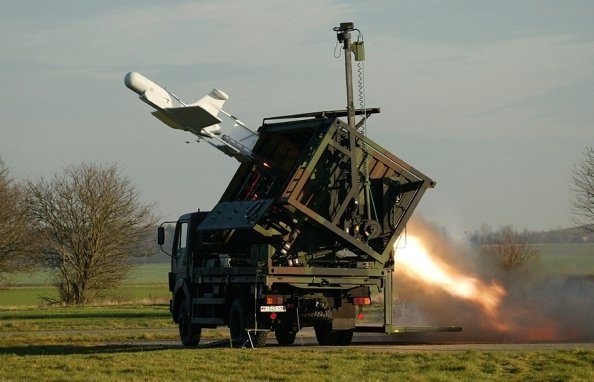Rheinmetall Defence of Düsseldorf and its partner Israel Aerospace Industries (IAI) have successfully tested the new WABEP system of systems. The trials focused on the reconnaissance and strike function of the WABEP, which is slated to become the Bundeswehr’s next unmanned air vehicle system.
Currently undergoing development at Rheinmetall, WABEP (which stands for “Wirksystem zur abstandsfähigen Bekämpfung von Einzel- und Punktzielen” or “Weapons system for standoff engagement of individual and point targets”) consists of a Rheinmetall-made KZO unmanned reconnaissance air vehicle and a “Harop” attack drone from IAI.
The KZO, whose German initials are short for “small air vehicle for target location”, is packed with high-performance sensors, enabling it to detect and identify targets; the Harop attack drone is responsible for precision engagement of the assigned target, destroying itself in the process.
The successfully executed tests mark the completion of the contractor trials. The next step in the realization of the project is a demonstration phase with Bundeswehr participation, which is being conducted at present.
During contractor test flights, the Harop attack drone and the reconnaissance and wireless data transmission components in the Rheinmetall KZO system operated in networked mode, albeit with the reconnaissance and wireless data transmission components (including the newly developed relay system) installed for testing purposes in a twin-engine Opale aircraft based on a civilian Diamond DA42.
The Harop has an extended loitering capability and can be used to engage high-value targets – reacting quickly, with extreme precision and situational flexibility. When linked with the KZO, moreover, it is possible to abort an attack mission just before impact.
During the recently conducted test flights, the exchange of tactical data, target information and sensor imagery between the two ground control stations and the Harop and KZO was successfully demonstrated for the first time in a variety of operational scenarios. In addition, the companies tested the transmission of Harop data and live videos conducted via the data relay installed on board the KZO-Opale.
The KZO detected and identified a large number of landmarks and infrastructure installations as well as stationary and moving targets, transmitting the target data to Harop via the WABEP combined system computer. The Harop was then guided to the target with the help of this data. In line with future operational protocols, final authorization for engagement of the target followed a target verification procedure conducted at both the ground control stations.











